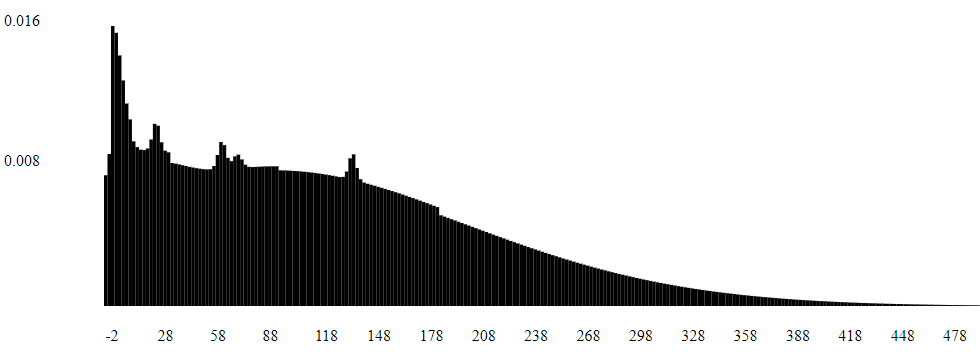Quincy Enunwa had a breakout season last year, and most people expected him to continue to improve in 2017, his second year as a number 1 receiver. Those expectations were wrong, because today the Jets announced that Enunwa injured his neck, and now will miss the entire season. It is a very unfortunate break for Enunwa. It shows the violent and unpredictable nature of professional football, where players can get severely injured even in scrimmages. It also shows a flaw in many projection systems which assume normally shaped distributions and thereby neglect the possibility of a catastrophic event.
In fantasy football, and in most future looking things, there is a non-zero chance of a zero outcome. This should be reflected in projections in that system, otherwise the projections are over-confident.
I try to follow this guideline for projection systems I make; for example, here is the distribution for expected points for Enunwa (standard league with no PPR), which features the possibility of 0 points:

Some other projection systems you might find have sort of a box and whisker plot describing the variance of their projections. However, none of these reflect the possibility of a 0 score. Regression based projection systems assume a Gaussian, or normal distribution, which is better: there’s a non-zero chance of a zero outcome. However, a Gaussian distribution probably understates the probability of a zero outcome. (There are other problems, for instance these distributions allow for large negative-value outcomes, sometimes when such outcomes are impossible).
Now, other systems will be quick to adjust Enunwa’s projections to 0. Players with Enunwa on their roster will be quick to grab another receiver. This responsiveness is arguably more important. But, if you can be both responsive and properly calibrated in your precision metrics, this is the best of both worlds.